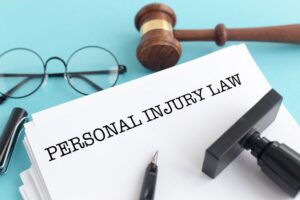February 01, 2025
How To Prove Negligence In A Personal Injury Claim

When accidents happen, proving negligence is often the foundation of any personal injury claim. It’s how we show that someone else’s actions—or lack of action—caused harm and that they should be held accountable. Our friends at Cohen & Cohen discuss the essential elements of negligence and how they apply to common situations like car accidents and workplace injuries.
Negligence might sound like a legal term, but it’s something we encounter regularly. Whether it’s a distracted driver, a slippery floor at work, or unsafe conditions, negligence is about someone failing to act responsibly, leading to harm. Let’s break it down step by step.
Establishing Duty Of Care
The first element of proving negligence is demonstrating that the other party owed you a duty of care. In personal injury cases, duty of care refers to the responsibility someone has to act in a way that avoids causing harm to others.
For example, drivers on the road owe a duty of care to everyone else by following traffic laws and driving safely. Similarly, employers are responsible for providing a safe work environment for their employees. This duty is the starting point for holding someone accountable when an injury occurs.
In most cases, the existence of a duty of care is clear and undisputed. It’s not about proving whether a duty existed but whether it was upheld.
Showing A Breach Of Duty
Next, we need to show that the other party failed to meet their duty of care. This is called a breach of duty. A breach occurs when someone acts in a way that a reasonable person wouldn’t or fails to take reasonable precautions.
For instance, let’s consider a car accident caused by a distracted driver. If that driver was texting while driving, they breached their duty to operate their vehicle safely. In a workplace injury, if an employer failed to provide proper safety equipment, that could also be considered a breach.
This step often involves gathering evidence, such as photos, video footage, or witness statements, to show how the other party acted—or failed to act—in a negligent way.
Connecting The Breach To The Injury
Once we establish a breach of duty, we need to prove that the breach directly caused the injury. This connection is known as causation, and it’s critical to any personal injury claim.
Let’s say someone slips on a wet floor at a grocery store. If the store’s employees knew about the hazard but didn’t put up a warning sign or clean it promptly, their negligence could be linked directly to the customer’s fall.
In some cases, the other side might argue that the injury was caused by something else. For example, an employer might claim that an injury wasn’t work-related, or a driver might argue that poor weather caused an accident. That’s why gathering evidence is so important—it strengthens the link between the breach of duty and the harm that occurred.
Demonstrating The Harm
The final step in proving negligence is showing that the injury resulted in measurable harm. This includes physical injuries, emotional distress, financial losses, or any other damages that resulted from the accident.
Medical records, bills, and pay stubs can help show the impact of an injury on our health and finances. In some cases, we might also include testimony from doctors or other professionals to demonstrate the long-term effects of an injury.
For example, someone injured in a car accident might face not only medical expenses but also lost wages from being unable to work. These harms must be documented to build a strong case for compensation.
Proving negligence might seem like a lot to take on, but breaking it into these elements—duty, breach, causation, and harm—helps clarify what’s needed to build a strong claim. With the right evidence and support, we can hold negligent parties accountable and seek the compensation we need to move forward.
Working with a personal injury lawyer can make this process easier, as they can guide you through each step and help present a compelling case. At the heart of every personal injury claim is the goal of fairness—making sure those harmed by someone else’s actions have the resources they need to recover and rebuild.
